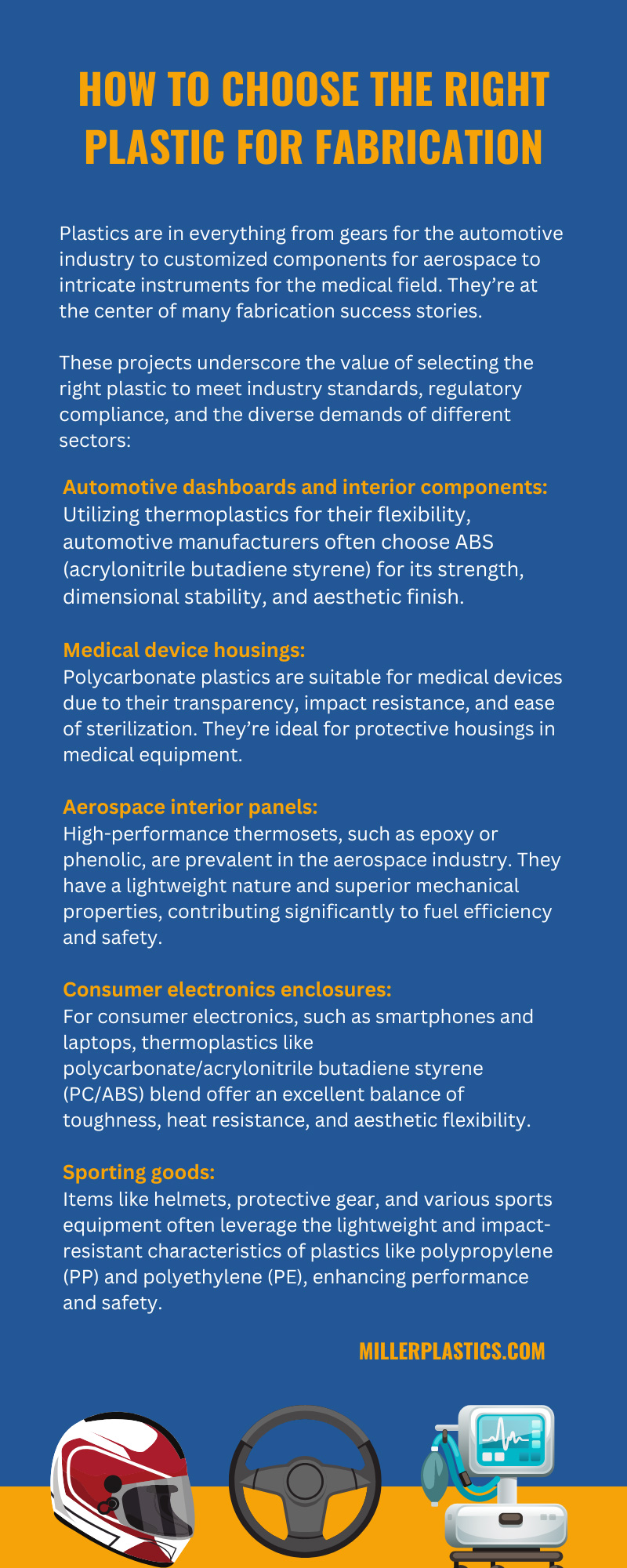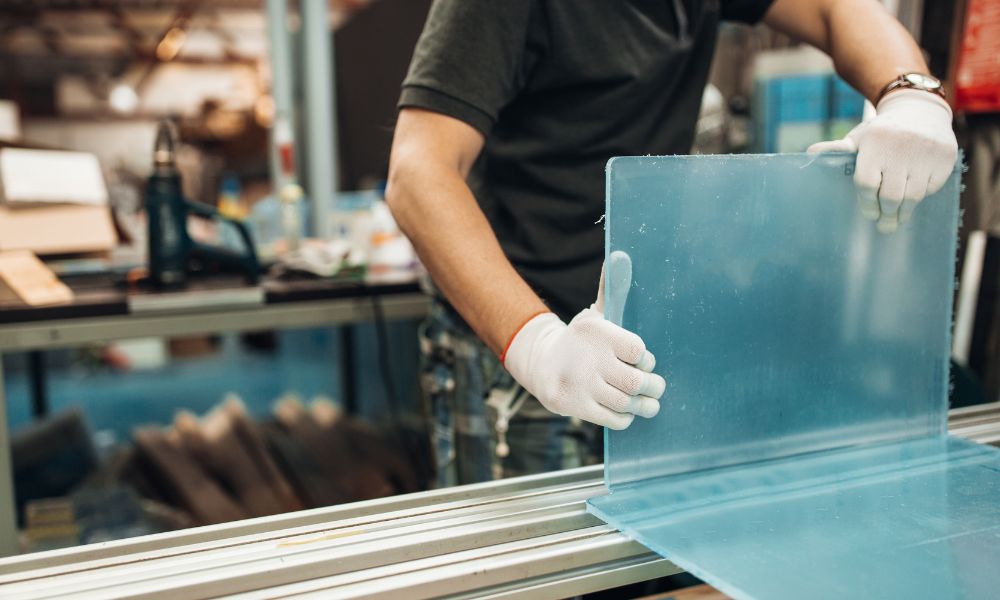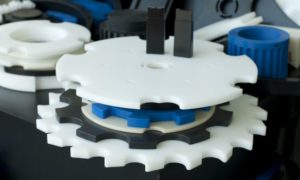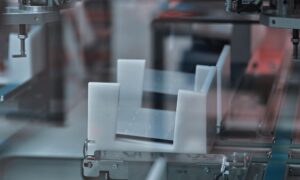In plastic fabrication, the initial material selection is a strategic decision that profoundly influences every stage of the production lifecycle. The plastics industry offers a vast array of materials, each tailored to unique settings and uses, making a precise choice imperative. When manufacturing custom gears, a careful selection of plastic can mean the difference between a successful, long-lasting product and one that falls short regarding quality and functionality.
Understanding how to choose the right plastic for fabrication can significantly impact product performance, durability, and cost-effectiveness, highlighting its importance from both a practical and a bottom-line perspective. This extensive guide is for manufacturers, design engineers, and fabricators navigating the intricate process of plastic selection for their fabrication projects.
The Role of Plastic in Manufacturing
Plastics have dramatically transformed manufacturing industries all over the world, offering versatile components that are lightweight, resistant to corrosion, and often more cost-effective than traditional materials. In the production of custom gears, plastic fabrication often outstrips metals in terms of efficiency, machinability, and design freedom. They allow for intricate gear design, quieter operation, and reduced maintenance, all without sacrificing strength or quality.
Without plastics, the modern world simply wouldn’t be possible. But, before we can discuss the nitty-gritty of choosing the right plastic, it’s essential to grasp how integral plastic materials are to the manufacturing process and product performance. By understanding plastic’s specific strengths, limitations, and applications, leaders across the industry can make practical, well-informed decisions that suit their situation and needs.
Understanding Plastic Types
You can generally classify plastics into two main categories: thermoplastics and thermosetting materials, each serving different functions in the fabrication process.
Thermoplastics vs. Thermosets
Thermoplastics are a class of polymers manufacturers can repeatedly soften by heating and harden by cooling, allowing for fabrication adjustments during their life cycle. In contrast, thermosets undergo a chemical reaction during the initial curing process, becoming infusible and intractable.
Understanding which process will benefit your fabrication project is crucial:
- Thermoplastics: Preferred when flexibility, recycling, and reshaping capabilities are paramount. This attribute makes them ideal for products that may need adjusting post-production or recycling at the end of their lifecycle. Common applications include packaging, containers, and automotive parts where versatility and durability are necessary.
- Thermosets: Often chosen for applications where high heat resistance, structural integrity, and dimensional stability are crucial. Once set, thermosets provide superior heat, chemicals, and mechanical stress resistance, making them suitable for high-performance components in the aerospace, electrical, and automotive industries.
Thermosets are best if your project demands a material that can withstand harsh conditions without deforming or losing properties. Conversely, if the focus is on adaptability, reusability, and cost-effectiveness, thermoplastics offer more flexibility.
Common Plastic Materials Used in Fabrication
Within these broad categories, numerous specific types of plastics exist, each with unique properties. Polyethylene, polycarbonate, and polypropylene are just a few examples of plastics that see frequent use in fabrication due to their abundance and suitability for various production techniques. For manufacturers and fabricators, selecting the right plastic type depends on the project’s specific needs, ranging from mechanical properties to color and finish.
Examples of Fabrication Projects Using Plastics
Plastics are in everything from gears for the automotive industry to customized components for aerospace to intricate instruments for the medical field. They’re at the center of many fabrication success stories.
These projects underscore the value of selecting the right plastic to meet industry standards, regulatory compliance, and the diverse demands of different sectors:
- Automotive dashboards and interior components: Utilizing thermoplastics for their flexibility, automotive manufacturers often choose ABS (acrylonitrile butadiene styrene) for its strength, dimensional stability, and aesthetic finish.
- Medical device housings: Polycarbonate plastics are suitable for medical devices due to their transparency, impact resistance, and ease of sterilization. They’re ideal for protective housings in medical equipment.
- Aerospace interior panels: High-performance thermosets, such as epoxy or phenolic, are prevalent in the aerospace industry. They have a lightweight nature and superior mechanical properties, contributing significantly to fuel efficiency and safety.
- Consumer electronics enclosures: For consumer electronics, such as smartphones and laptops, thermoplastics like polycarbonate/acrylonitrile butadiene styrene (PC/ABS) blend offer an excellent balance of toughness, heat resistance, and aesthetic flexibility.
- Sporting goods: Items like helmets, protective gear, and various sports equipment often leverage the lightweight and impact-resistant characteristics of plastics like polypropylene (PP) and polyethylene (PE), enhancing performance and safety.
These examples illustrate the diversity and adaptability of plastics in various fabrication projects across multiple industries. They emphasize the crucial role of material selection in achieving desired product outcomes.
Factors To Consider
When it’s time to choose a plastic material for custom gear fabrication, a multitude of factors come into play. Neglecting even one can result in costly errors or suboptimal product performance.
Mechanical Properties Required
The expected load, speed, and precise motion transmission are critical in selecting a plastic with the right mechanical properties. Parts that operate under high loads and at high speeds need materials that are resistant to wear and have high tensile strength and stiffness.
Chemical Resistance
Components exposed to various chemicals must contain a material that neither reacts nor deforms, ensuring long-term functionality and safety. For instance, in the presence of strong acids or bases, polytetrafluoroethylene (PTFE) might be preferable for its inertness and low coefficient of friction.
Temperature and Environmental Conditions
Environmental factors like temperature, moisture, and ultraviolet (UV) exposure can profoundly affect the performance and, ultimately, the lifespan of a fabricated plastic component. Selecting plastics that degrade slowly under these conditions, such as acetal or polyethylene, is essential.
Selection Process
Navigating through the swath of available plastics can be daunting. A systematic selection process is invaluable in streamlining decision-making. It cuts through the noise and zeroes in on the most suitable material.
Assessing Project Requirements
Start with a thorough analysis of your project’s needs, considering all technical specifications and functionalities the plastic part must fulfill. This can involve load calculations, stress analysis, and environmental factor assessments.
Compatibility With Fabrication Techniques
Each plastic has its own recommended fabrication techniques that ensure optimal results. Understanding these parameters and their compatibility with your in-house capabilities or preferred manufacturing partner is essential to avoid inefficiencies, defects, or rework.
Price
Cost is a pivotal factor in material selection. However, saving money on the plastic material upfront can lead to higher costs in the long run if it results in poor quality or frequent replacements. Consider the material’s long-term cost versus its initial price.
Toward Sustainability
In our modern eco-conscious climate, sustainability has become a significant player in material selection. The push for recyclable, reusable, and environmentally friendly plastics is reshaping the industry and offers an additional dimension to the selection process.
Manufacturers should not only select plastics that meet their project needs but also align with their environmental commitments. This dual-purpose selection can pave the way for more responsible and lasting manufacturing choices.
Make a Choice That’ll Drive Success and Innovation
Choosing the right plastic for fabrication is a multifaceted practice that must balance technical specifications, environmental demands, production feasibility, and cost considerations. A systematic approach to material selection ensures that the chosen plastic will enhance the product’s performance, quality, and sustainability.
In the competitive industry of custom gear production and plastic fabrication, the materials used are pivotal to staying on top. By staying informed, conducting comprehensive analysis, and exercising due diligence, manufacturers can leverage the power of plastics to drive innovation and produce exceptional, long-lasting success.





